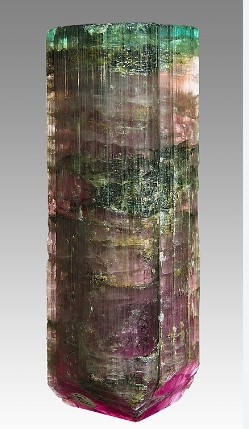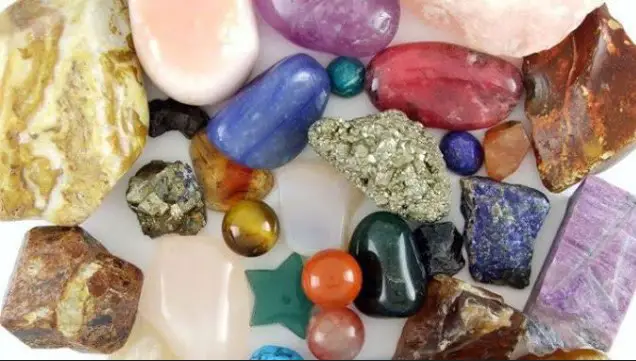Minerals are the building blocks of our planet’s crust and play a pivotal role in shaping the Earth’s surface, influencing its ecosystem and human economies. Composed of specific chemical compositions and crystalline structures, these naturally occurring substances are categorized based on their origin: primary and secondary minerals. While they may seem inert, minerals have dynamic roles in geological processes that modify the landscape over millennia.
Primary minerals form directly from the cooling of magma or lava and are typically found in igneous rocks. These minerals crystallize from molten material and are often visible as distinct crystals in the rocks where they form. Secondary minerals, however, arise from the alteration of primary minerals. They develop through processes like weathering and hydrothermal alterations, where changes in temperature, pressure, or chemical environments transform the original minerals into new forms.
The difference between primary and secondary minerals lies not only in their formation but also in their chemical stability, environmental roles, and uses in various industries. Primary minerals provide insights into the history of the Earth’s geological formations, while secondary minerals can indicate the environmental conditions that altered a particular landscape. Both types have distinct characteristics and applications, making them crucial for geological studies and commercial uses.

Primary Minerals
Definition and Characteristics
Primary minerals are those that have crystallized directly from the cooling of magma or lava. These minerals are typically found in igneous rocks and are characterized by their formation in a molten state. Due to their origins, primary minerals generally have a crystalline structure and are often composed of silicates, such as feldspar and quartz, which are resistant to weathering. They retain the original chemical composition of the magma, making them crucial for understanding the geochemical history of the Earth.
Formation Processes
The formation of primary minerals is directly tied to the cooling and solidification of magma or lava. This process occurs in three key stages:
- Cooling: As magma cools, it begins to crystallize. The temperature at which different minerals start to crystallize varies, leading to a sequence known as Bowen’s Reaction Series.
- Crystallization: Minerals crystallize according to their melting points. Those with a higher melting point crystallize first, followed by those with lower melting points.
- Solidification: The crystalline minerals then solidify to form igneous rocks, with the interlocking of crystals contributing to the rock’s overall strength and durability.
Common Examples
Some common primary minerals include:
- Quartz: Known for its hardness and chemical stability.
- Feldspar: The most abundant mineral group in the Earth’s crust.
- Olivine: Typically found in mafic rocks and known for its green color.
Secondary Minerals
Definition and Characteristics
Secondary minerals form from the alteration of primary minerals through processes such as weathering, hydrothermal activity, or chemical changes. Unlike primary minerals, these are not formed from molten material but from the transformation of existing minerals in environments exposed to water, gases, or other chemical agents. Secondary minerals are often less stable chemically and more reactive than primary minerals.
Formation Processes
The formation of secondary minerals involves several environmental interactions, mainly:
- Weathering: Chemical weathering involves the reaction of primary minerals with water and atmospheric gases, leading to new mineral formations.
- Hydration and Hydrolysis: Water adds to or replaces elements in the mineral structure.
- Oxidation: This process involves the combination of minerals with oxygen, often changing the mineral’s composition and appearance.
Common Examples
Typical secondary minerals include:
- Clay minerals: Formed from the weathering of feldspar and other silicates.
- Iron oxides: Such as hematite and goethite, formed from the oxidation of iron-bearing minerals.
- Zeolites: Formed from the alteration of volcanic glass.
Key Differences
Chemical Composition
Primary minerals retain the original elemental composition of the magma, which typically includes elements like silicon, aluminum, and potassium. Secondary minerals, however, often have compositions that reflect the altering conditions, such as increased levels of oxygen or hydrogen due to exposure to water and air.
Formation Environment
Primary minerals form in high-temperature environments where magma or lava is present. In contrast, secondary minerals form at lower temperatures, typically at the Earth’s surface or near-surface environments where primary minerals are exposed to atmospheric conditions and water.
Physical Properties
Primary minerals tend to be harder and more durable due to their crystalline and often interlocking structure. Secondary minerals are generally softer, more porous, and show varied textures due to their formation processes involving water and other fluids.
Formation Sites
Geological Settings for Primary Minerals
Primary minerals are predominantly found in:
- Volcanic regions: Where magma reaches the surface and cools quickly to form volcanic rocks.
- Plutonic environments: Deep within the Earth’s crust where magma cools slowly, forming large-grained intrusive rocks.
Geological Settings for Secondary Minerals
Secondary minerals are commonly found in:
- Soil profiles: As products of the weathering of underlying bedrock.
- Hydrothermal areas: Where hot, mineral-laden water alters the composition of rocks.

Role in Soil Health
Contributions of Primary Minerals
Primary minerals play a crucial role in the health and fertility of soils. These minerals provide essential nutrients that are vital for plant growth and soil structure. For example:
- Release of Nutrients: As primary minerals slowly weather, they release nutrients such as potassium, calcium, and magnesium, which are necessary for plant growth.
- Soil Structure: The physical properties of primary minerals, such as their hardness and crystalline structure, contribute to the aeration and drainage of the soil, enhancing its quality and fertility.
Contributions of Secondary Minerals
Secondary minerals contribute to soil health in several significant ways:
- Cation Exchange Capacity (CEC): Many secondary minerals, such as clays and zeolites, have high cation exchange capacities, which improve the soil’s ability to retain essential nutrients.
- pH Buffering: Secondary minerals can help buffer the pH of soil, maintaining conditions that are more favorable for plant growth.
- Water Retention: The porous nature of many secondary minerals helps in retaining water within the soil, which is crucial during dry conditions.
Economic Value
Uses of Primary Minerals in Industry
Primary minerals are extensively used across various industries due to their abundance and properties. Notable uses include:
- Construction: Minerals like quartz, feldspar, and mica are commonly used in the construction industry for making concrete, ceramics, and decorative stone.
- Electronics: Quartz is also vital in the electronics industry for making computer chips and other components due to its piezoelectric properties.
- Metal Industry: Minerals such as chromite and magnetite are used extensively in metal alloy production due to their high metal content.
Uses of Secondary Minerals in Industry
Secondary minerals also find numerous applications in industries:
- Agriculture: Gypsum, a secondary mineral, is widely used in agriculture to improve soil composition and reduce sodicity.
- Pollution Control: Zeolites, formed from volcanic ash, are used in water purification and as catalysts in chemical reactions.
- Building Materials: Certain secondary minerals are used in the manufacture of lightweight aggregates and insulation materials.
Environmental Impact
Mining Impacts of Primary Minerals
The extraction of primary minerals can have significant environmental impacts:
- Land Degradation: Open-pit and strip mining techniques can lead to significant soil erosion and destruction of ecosystems.
- Water Pollution: Mining operations often lead to water pollution due to the runoff of toxic chemicals used in mineral processing.
- Air Pollution: Dust and emissions from mining operations can contribute to air pollution, affecting wildlife and human health.
Environmental Reclamation and Secondary Minerals
Environmental reclamation efforts often utilize secondary minerals to mitigate the impacts of mining:
- Soil Remediation: Secondary minerals like zeolites are used to remove contaminants from soils and groundwater.
- Acid Mine Drainage: Secondary minerals can help neutralize acid mine drainage, a common problem in abandoned mine sites.
Identifying Minerals
Tools and Methods for Identification
Identifying minerals requires specific tools and techniques:
- Hand Lens: A simple but essential tool for examining the crystal form and structure of minerals.
- Hardness Kit: Used to determine the hardness of minerals, which is a key diagnostic property.
- Streak Plate: Helps in determining the streak color of minerals, which can be different from their apparent color.
Tips for Amateur Geologists
Amateurs interested in geology can enhance their mineral identification skills by:
- Field Guides: Utilize field guides to understand the properties of different minerals.
- Join Clubs: Many regions have mineralogical or geological clubs that organize field trips and workshops.
- Practice: Regular practice in identifying minerals in different settings, such as in streams, road cuts, and quarries, helps improve skills.
Frequently Asked Questions
What are Primary Minerals?
Primary minerals are those that crystallize directly from the cooling of magma or lava. They are usually found in igneous rocks and maintain their original form as they solidify from molten material, often retaining the chemical signature of their original magma source.
How do Secondary Minerals Form?
Secondary minerals form through the alteration of primary minerals by processes such as weathering, hydration, and hydrothermal activity. These transformations occur under varying environmental conditions that modify the original minerals into new mineral forms with different properties.
Why are Secondary Minerals Important?
Secondary minerals are important indicators of the geological and environmental history of an area. They provide crucial information about the past climate, the presence of water bodies, and the chemical reactions that took place, which can be essential for both scientific research and environmental assessment.
Can Minerals be Both Primary and Secondary?
While most minerals are classified as either primary or secondary based on their formation process, some minerals can initially form as primary and later be altered to become secondary. This transition reflects the dynamic and ever-changing nature of Earth’s geology.
Conclusion
Minerals, whether primary or secondary, are not just elements of the Earth’s crust; they narrate the history of our planet. By studying these minerals, scientists and geologists can infer not only the geological processes that shaped our world but also predict future changes. The distinction between these two types of minerals highlights the complexity of Earth’s systems and underscores the importance of detailed geological research.
Understanding the intricate differences between primary and secondary minerals enhances our ability to utilize these resources responsibly and sustainably. As we continue to explore and exploit these natural resources, appreciating their origin and impact on the environment becomes crucial for balanced ecological and economic development.

